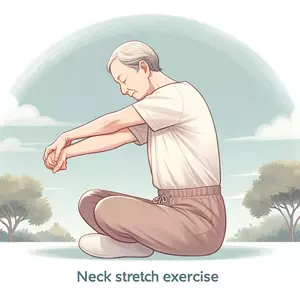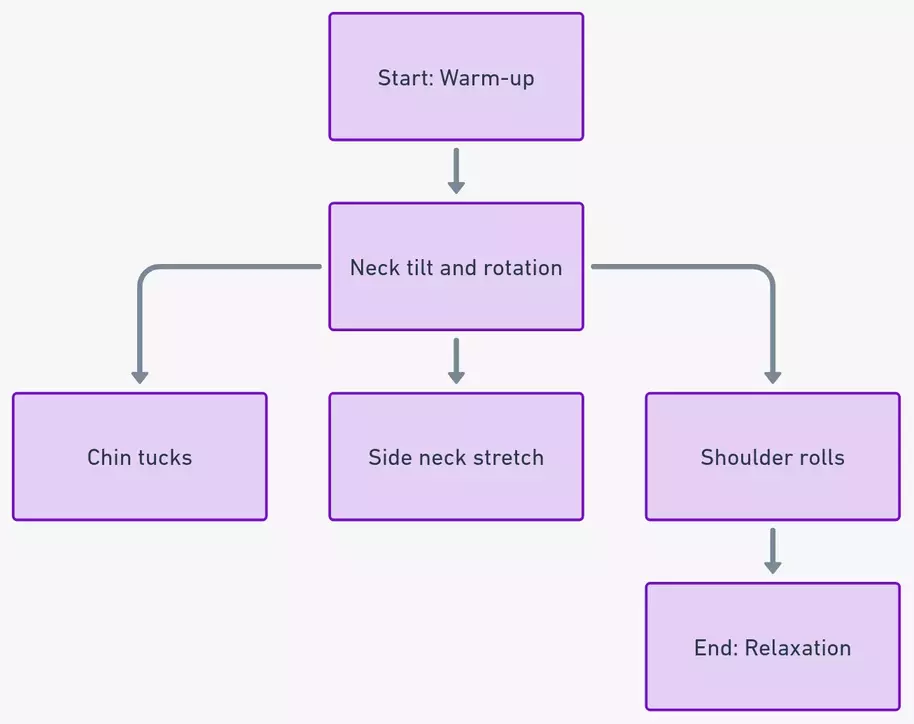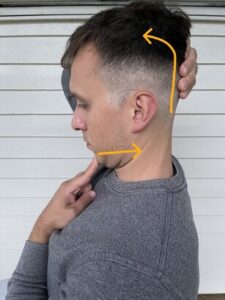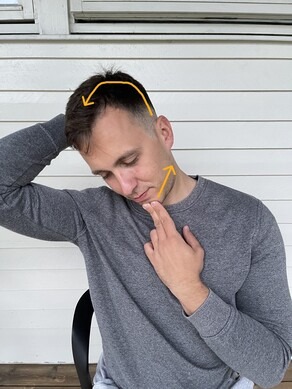3 Effective Neck Stretching Exercises for Seniors
Key Points
- Neck Health Importance: Regular neck exercises can alleviate discomfort and improve overall well-being for seniors.
- Consistent Routine: Incorporating neck stretches into daily routines, both morning and evening, can lead to long-term benefits.
- Addressing Concerns: It’s essential to understand the frequency of stretches, recognize signs of discomfort, and know when to seek professional advice.
Maintaining neck health is crucial as you get older. Both for relieving the tension and combating the stiffness in the neck area.
In this guide I will show you the three most effective neck stretching exercises for seniors you can perform daily to relieve neck muscle tension.
Neck Stretching Exercises for Seniors
- Neck tilt and rotation: Sit or stand straight. Slowly tilt your head to one side, aiming to touch the ear to the shoulder. Hold for a few seconds and repeat on the other side. For rotation, turn your head to one side, aligning the chin with the shoulder. Repeat on the other side.
- Chin tucks: This exercise, as highlighted by SilverSneakers, is excellent for strengthening the neck muscles. Sit or stand with a straight spine. Gently tuck in your chin, creating a ‘double chin’. Hold for a few seconds and release.
- Side neck stretch: Sit comfortably. With your right hand, gently pull your head towards the right shoulder. You’ll feel a stretch on the left side of the neck. Hold and repeat on the other side.
- Shoulder rolls: A simple yet effective exercise. Roll your shoulders in a circular motion, first clockwise and then anti-clockwise. It not only stretches the neck but also relaxes the shoulder muscles.
For a more visual guide, seniors can refer to this video tutorial which provides a step-by-step demonstration.
Chin Tucks
Neck Tilt and Rotation
Side Neck Stretch
Muscles worked in these stretches: sternocleidomastoideus, trapezius upper part, levator scapulae, suboccipital muscles.
Why Seniors Experience Neck Pain
Age isn’t just a number when it comes to your body. As you grow older, various factors contribute to neck discomfort:
- Age-related changes: With time, the cervical discs in our neck lose hydration, leading to reduced flexibility. This can result in stiffness and pain.
- Posture and lifestyle factors: Years of maintaining a poor posture, especially in this digital age of bending over smartphones and computers, can strain the neck. Understanding the nuances of posture can be a game-changer for seniors.
- Previous injuries: Old injuries, even those we might have forgotten, can come back to haunt us in our golden years, causing recurring pain or discomfort.
Benefits of Neck Stretching for Seniors
- Alleviation of neck pain: Regular stretching can help in reducing muscle tension, leading to decreased pain.
- Improved posture: Neck exercises play a pivotal role in correcting and maintaining a good posture, ensuring the spine’s alignment.
- Enhanced mobility and flexibility: With consistent practice, seniors can notice improved neck mobility, making daily activities like driving or looking over the shoulder easier.
- Reduction in tension and stress: A relaxed neck can lead to a relaxed mind. Stretching can be a therapeutic activity, reducing stress levels.
Safety Measures When Stretching Neck as Senior
- Consulting a physician: Always consult with a healthcare professional before starting any new exercise regimen. They can provide personalized advice tailored to individual health conditions.
- Understanding one’s own limits: It’s crucial to listen to one’s body. If an exercise causes pain (beyond a mild stretch), it’s a sign to stop.
- Importance of warm-up: Just like any other workout, warming up before neck exercises is crucial. A simple 5-minute general stretching routine can prepare the body.
Incorporating Props
Props can enhance neck exercises and offer additional support:
- Using a chair: Chair-based exercises, especially beneficial for those with limited mobility, allow for simple neck stretches and rotations.
- Benefits of resistance bands: As touched upon earlier, resistance bands intensify exercises, aiding in muscle strengthening.
- The role of foam rollers: Foam rollers, ideal for self-massage, assist in alleviating tension and knots in the neck region. Discover the best stretching equipment for home.
Commonly Asked Questions
1. Is it normal to hear a cracking sound during stretches? Yes, it’s quite common to hear a cracking or popping sound during stretches, especially in the neck. This sound often results from the release of gas bubbles trapped between joints. As long as the sound is not accompanied by pain or discomfort, it’s typically harmless. However, if you’re concerned or if the sound is a result of a recent injury, it’s best to consult a healthcare professional. Learn more about the intricacies of stretching exercises for beginners over 50.
2. How long should each stretch be held? For optimal benefits, each neck stretch should be held for about 15-30 seconds. It’s essential to breathe deeply and relax into the stretch, ensuring you don’t push too hard to the point of pain. Consistency is key, so repeating each stretch 2-3 times during a session can offer the best results. Dive deeper into the world of dynamic stretches for older adults.
3. Can neck exercises alleviate headaches? Absolutely! Tension headaches, often stemming from tightness in the neck and shoulder muscles, can be alleviated with regular neck exercises. By stretching and strengthening the neck muscles, you can reduce muscle tension, improve blood flow, and potentially decrease the frequency and intensity of tension headaches. If you’re prone to headaches, consider exploring fascia stretching for seniors to understand the deeper muscle layers.






